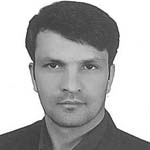Socio-spatial Fault: Understanding and Meaning of Afghan Immigrants of Spatial Segregation in Tehran
Spatial segregation of foreign immigrants is one prominent feature of the Tehran metropolis, which can strongly impact sustainable urban development, and the process of social changes. This article aims to explore Afghan immigrants' understanding and meaning of spatial segregation and its consequences.
The data for this study was collected using the grounded theory method, a unique approach that allows for a comprehensive understanding of the subject. We conducted in-depth semi-structured interviews with 20 Afghan immigrants living in Tehran, selected purposefully for their diverse experiences and perspectives.
The study identified 109 primary concepts, 15 sub-themes, and four main themes. These main themes include biological segregation, sense of belonging in the shadow of inequality, verbal and spatial demarcation, and socio-spatial distance. Through the analysis of these categories, the concept of social-spatial fault emerged as the final category of this research, highlighting the spatial segregation of Afghan immigrants in Tehran resulting from significant disparities at both micro and macro levels between immigrants and the host community.
The findings suggest that immigrants in the receiving society are not uniform but rather exhibit diverse settlement patterns based on their levels of social integration and acculturation.
-
An Investigation on Identity Challenges Faced by Muslim Women Immigrants in Europe
Reyhanesadat Gerami, Younes Nourbakhsh *,
Women in Development and Politics, Spring 2025 -
Ethnic Differences in Childbearing Ideals and Behaviors in Iran
*, Zahra Abedini, Mahdi Malmir, Marzieh Ebrahimi
Journal of Population Association of Iran,



